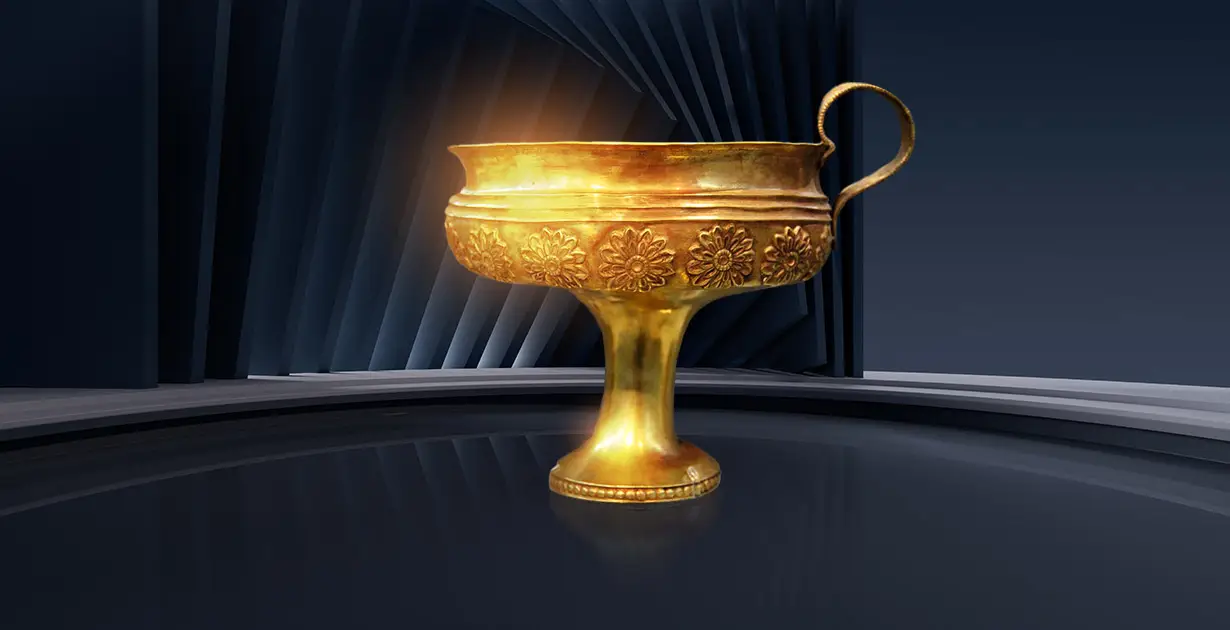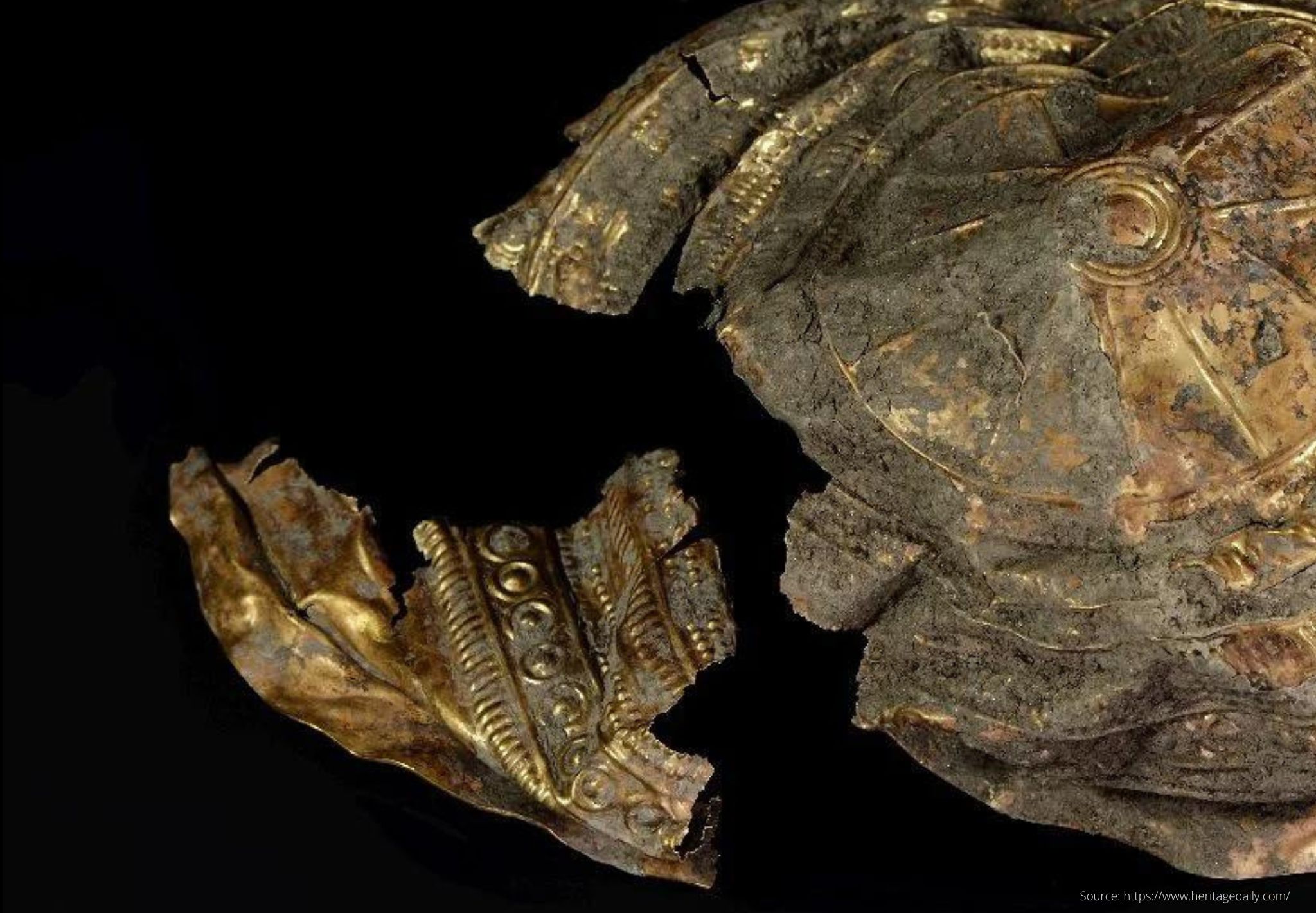
Rare 3000-year-old golden bowl from Austria
Average reading time — 3 minutes
In Ebreichsdorf, Austria, archaeologists discovered a rare golden bowl which was made more than 3,000 years ago. The item from the Bronze Age is decorated with a sun motif. In total, 30 similar items made of the valuable metal were found in Europe. The bowl is the first of its kind found in Austria, and the second found east of the Alps. The largest number of vessels of this type was found in Germany and Scandinavian countries.
Image of the golden bowl
The Austrian golden bowl is 2 inches (5.08 cm) high and 8 inches (20.32 cm) in diameter. The object is made of a thin sheet of gold and decorated in repoussé technique, thanks to which there is a convex pattern on the front side. The bottom of the bowl is decorated with an image of the sun with 11 rays emanating from it. The sides of the bowl are decorated with a geometric ornament of circles, rhombuses and dots.
Four precious objects were found inside the bowl: bracelets of spiral wire and two objects of organic origin wrapped in gold wire. Archaeologists believe that the latter were made of leather or fabric stitched with gold thread.
History of the discovery from Austria
The excavation work at Ebreichsdorf began in 2019 by the German company Novetus, led by archaeologist Michał Sip. The project envisages the construction of a railway station, so scientists are tasked with saving objects of archaeological value. During the process, a settlement was discovered that dates back to the Late Bronze Age and is attributed to the Urnfield culture known for its urns. Its name is associated with the tradition of burying urns with the ashes of the deceased in the fields. The place was inhabited between 1,300 and 1,000 BC.
Several pile dwellings, which were located around the central building, formed a small settlement. It covered an area of 25 acres (about 10 hectares or 0.1 km2) where a community of 100 to 150 people lived. A vessel made of the precious metal was found near the wall of one of the piled dwellings.

Mysterious purpose
As for the supposed purpose of the bowl, it could be used during rituals, especially considering that it is made of gold — a metal that has always been associated with the divine power in the public consciousness. Along the southern edge, the settlement was bordered by a swamp or stream, on the dried bottom of which archaeologists found about 500 objects made of a less valuable metal, namely bronze. Among them were pins, daggers and knives with preserved handles. In addition, animal bones and pottery were found.
Since the discovered objects are practically intact and not damaged, it can be concluded that they were not thrown away as garbage. Since the reservoir was shallow, periodically even too shallow, scientists believe that it was not used for navigation, and therefore the items were not lost by accident. Judging by the distribution of the items found, they were deliberately dumped in one place. It is possible that the reservoir had a ritual significance, and the objects were thrown into it as a religious offering.
The further fate of the golden bowl
History and archaeological artifacts are reverent in Austria. Therefore, the safety of the jewelry from Ebreichsdorf is a top priority. An analysis of the composition of the bowl was carried out, as a result of which it was revealed that 90% of it consists of gold, 5% of silver, and the other 5% of copper. Scientists also hope to establish the origin of these materials in order to find out exactly where they were mined.
The golden bowl was carefully cleaned of impurities and then transferred to the Kunsthistorisches Museum in Vienna. However, everyone can check out the 3D model of the golden bowl, obtained as a result of scanning the original version, on the Internet.
Read also the article:
Golden cup from the Bronze Age





